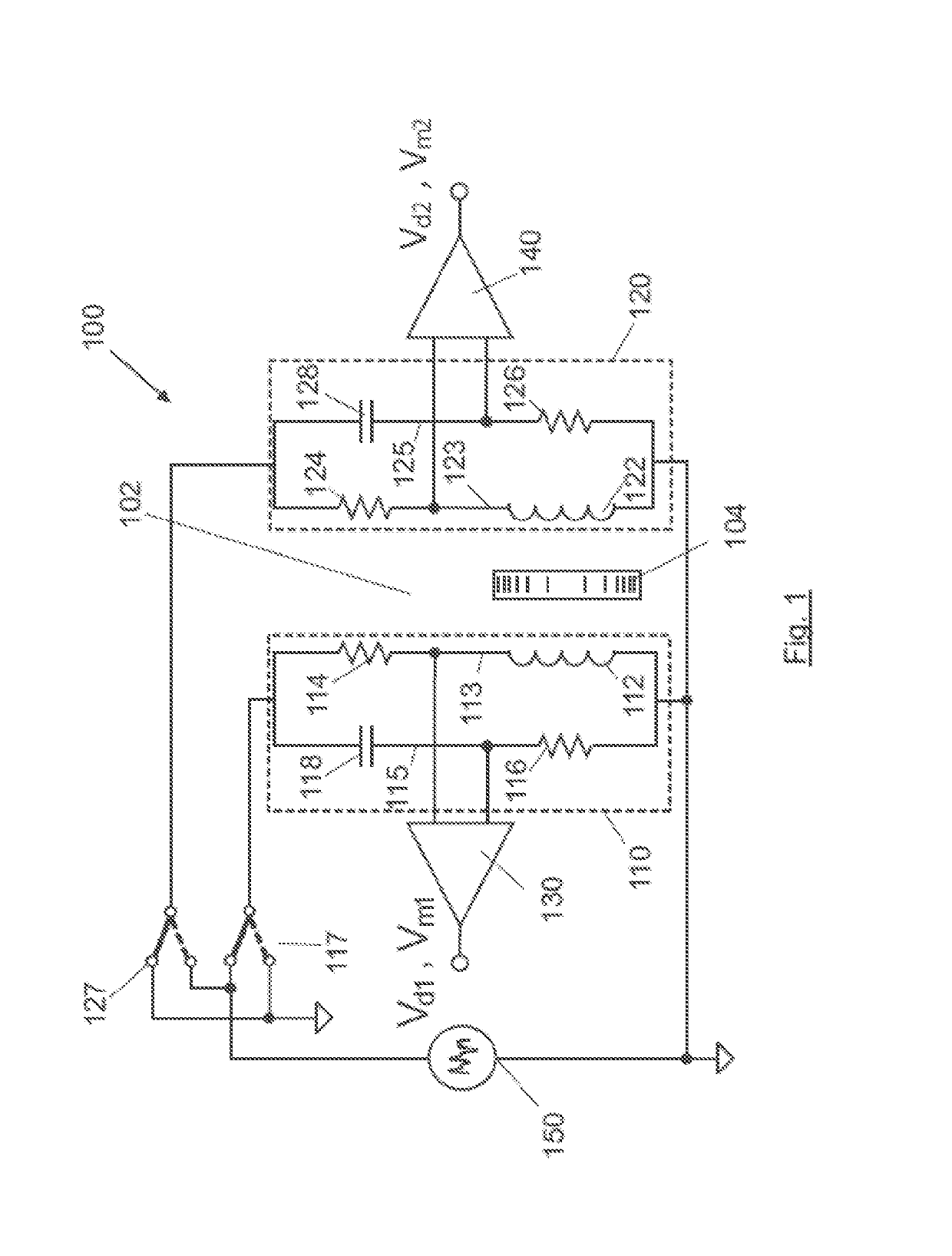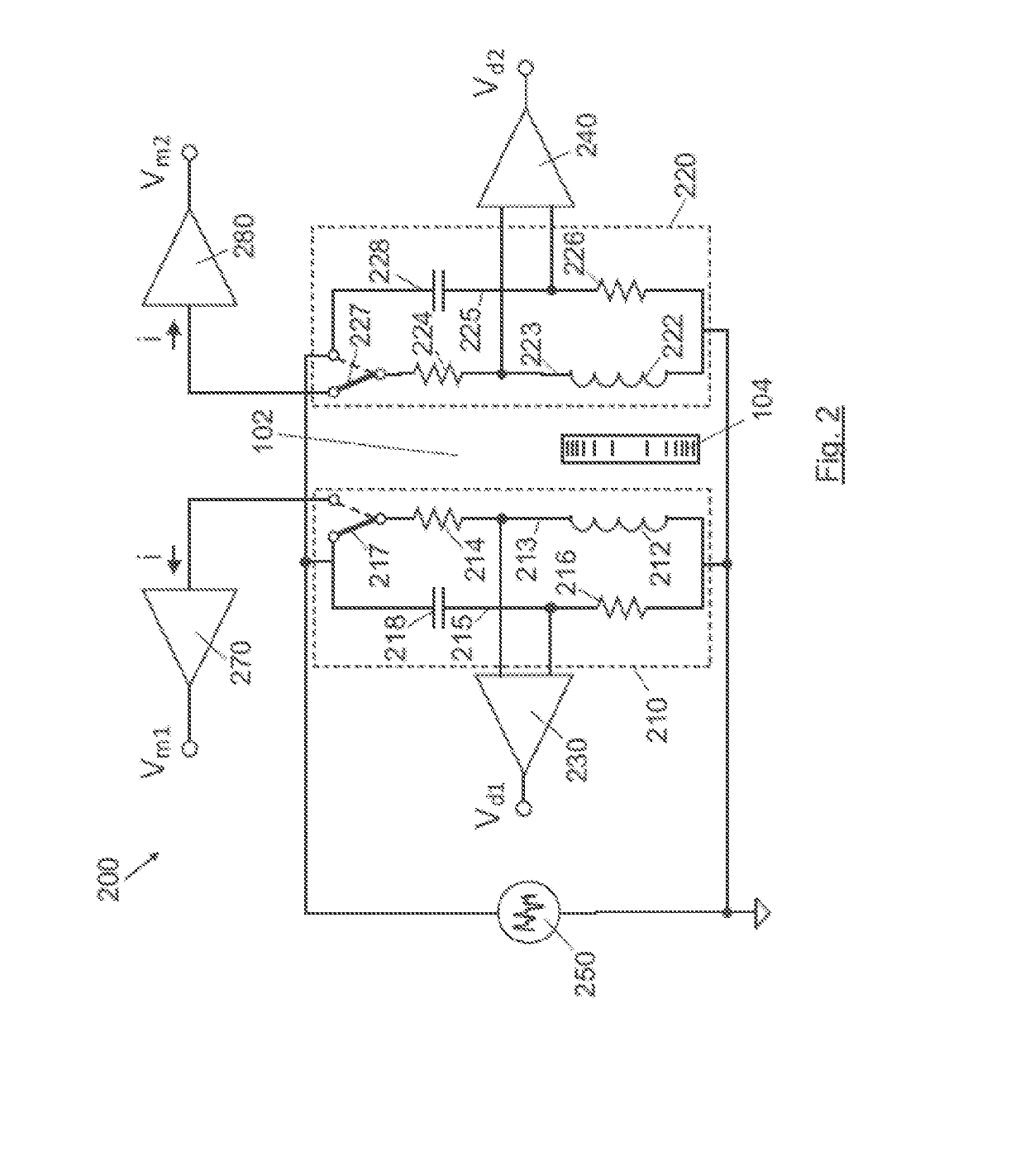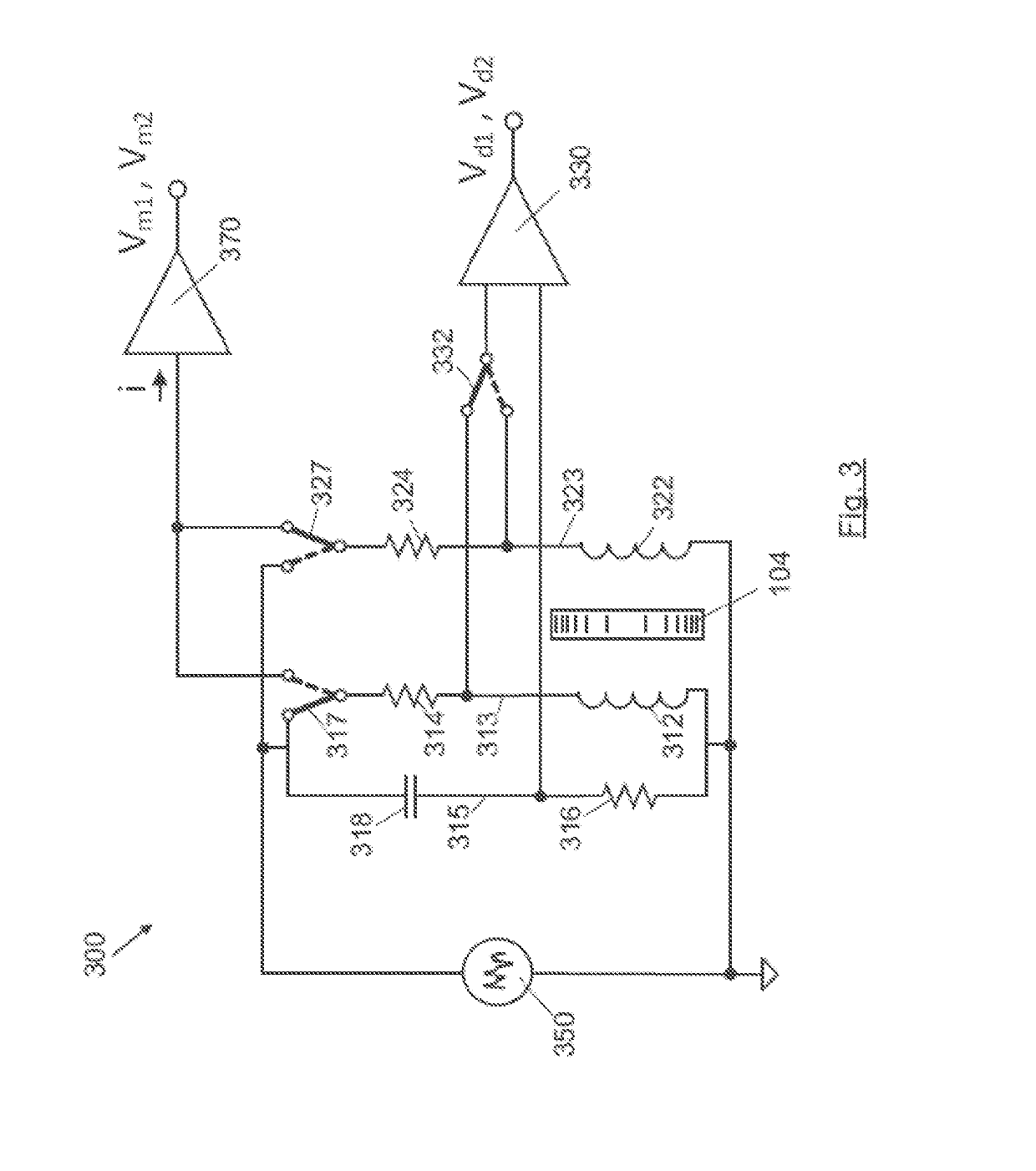Coin sensor
a coin sensor and coin technology, applied in the field of coins, can solve the problems of inability to obtain parameters, and excessive complexity and space requirements, and achieve the effects of improving sensitivity and signal/noise ratio, precision and stability of measurements, and high reliability of coins
- Summary
- Abstract
- Description
- Claims
- Application Information
AI Technical Summary
Benefits of technology
Problems solved by technology
Method used
Image
Examples
Embodiment Construction
[0010]The object of the present invention is an electromagnetic coin sensor specially designed to measure multi-layer coins that resolves the aforementioned drawbacks. The sensor is composed of two inductors arranged facing each other between which the coin to be measured is made to pass. Each of the inductors forms part of an independent bridge (preferably a Maxwell bridge) when impedances corresponding to the sensor of the bridge being excited are measured.
[0011]The excitation of the bridge is performed by means of a pattern signal with spectral energy to the frequencies of interest. This pattern signal may be:[0012]A multi-tone signal, with components in the specific frequencies at which we wish to obtain information on coin passage. A multi-tone signal is composed of the sum of two or more pure sinusoidal waveforms, each with its amplitude, frequency and independent phases therebetween, but constant over time. In the embodiments detailed below, the signal used is composed of thr...
PUM
| Property | Measurement | Unit |
|---|---|---|
| frequencies | aaaaa | aaaaa |
| voltage | aaaaa | aaaaa |
| capacitance | aaaaa | aaaaa |
Abstract
Description
Claims
Application Information
 Login to View More
Login to View More - R&D
- Intellectual Property
- Life Sciences
- Materials
- Tech Scout
- Unparalleled Data Quality
- Higher Quality Content
- 60% Fewer Hallucinations
Browse by: Latest US Patents, China's latest patents, Technical Efficacy Thesaurus, Application Domain, Technology Topic, Popular Technical Reports.
© 2025 PatSnap. All rights reserved.Legal|Privacy policy|Modern Slavery Act Transparency Statement|Sitemap|About US| Contact US: help@patsnap.com



